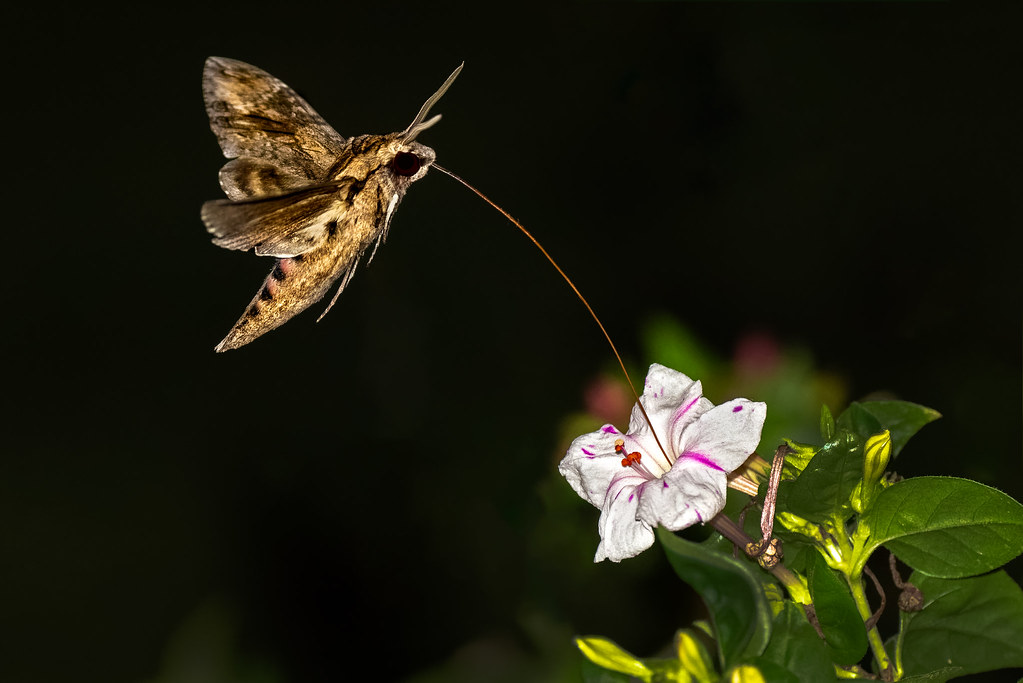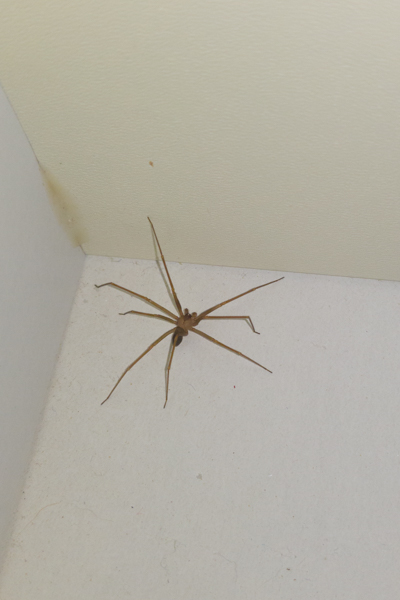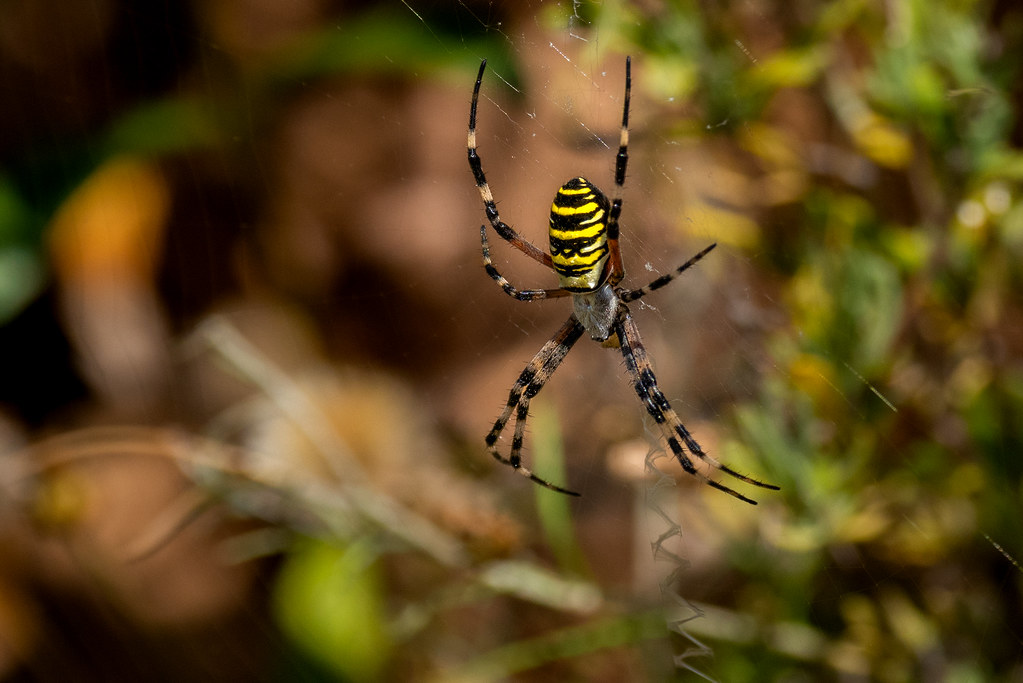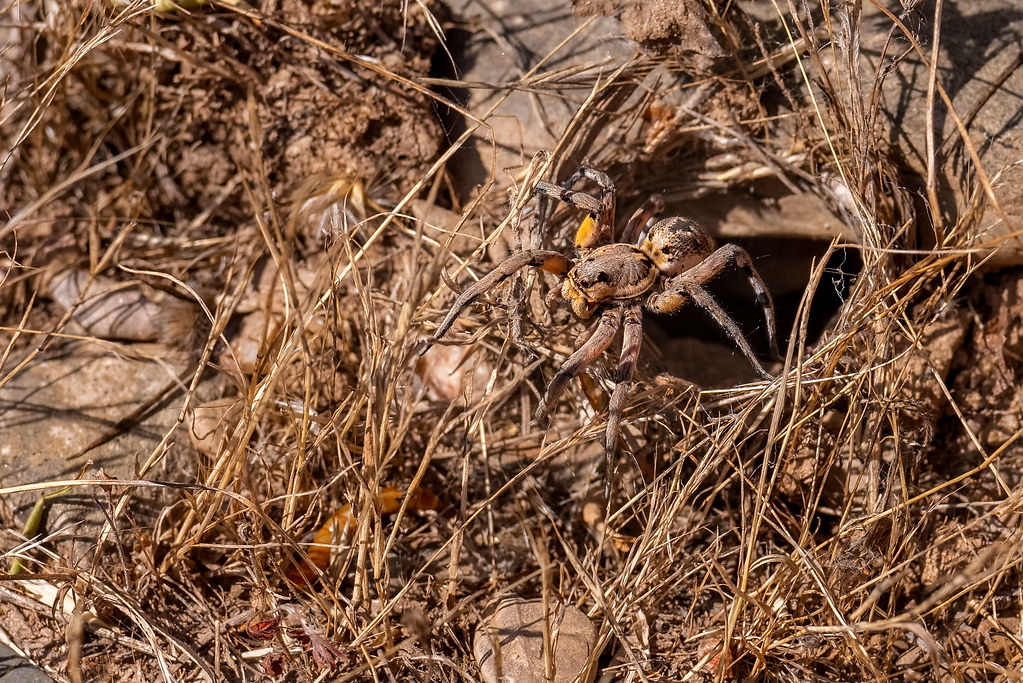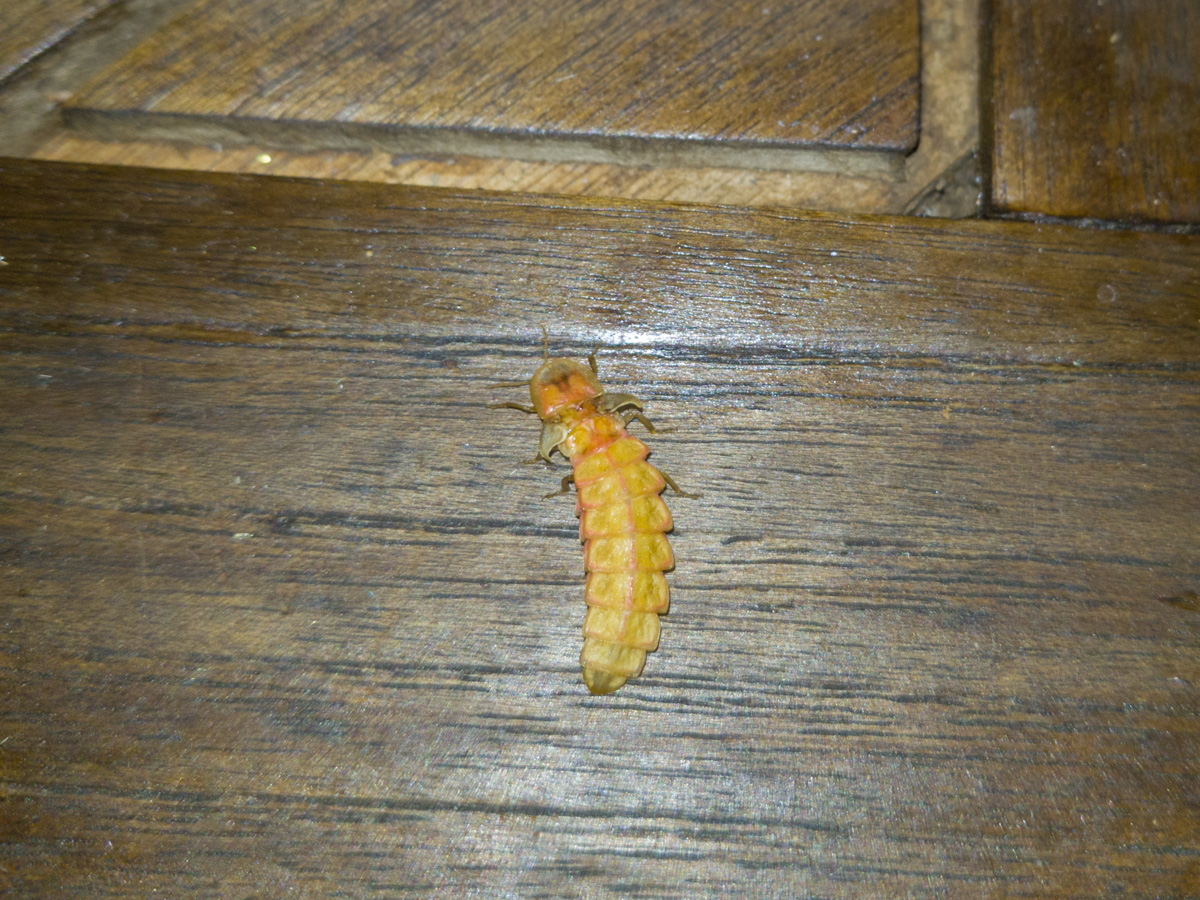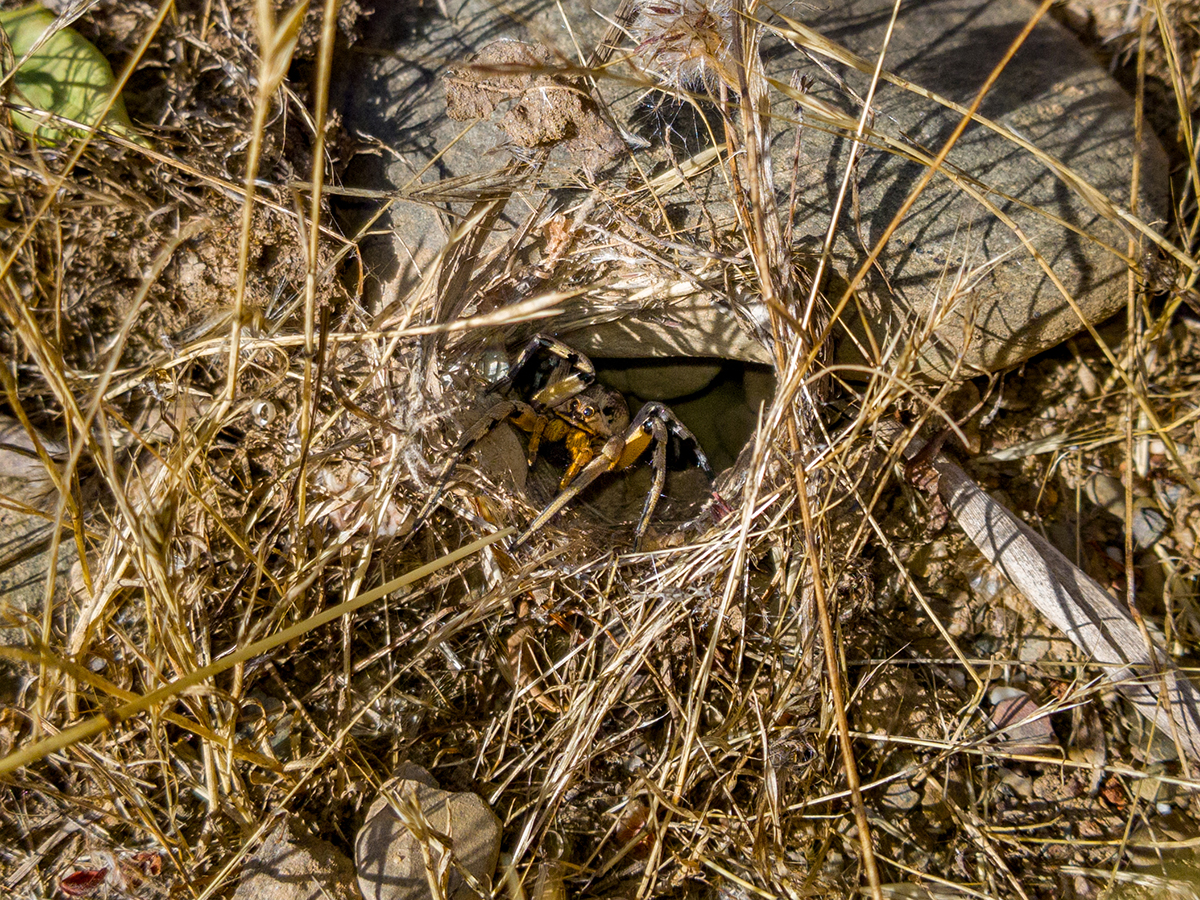Well after sunset and nearing the end of twilight I noticed some large flying objects moving around in a dimly lit area of the garden. After investigation I realised these were huge moths and feeding like Hummingbird moths but much, much larger.
I grabbed my Nikon D810 (which as usual, was fitted with my 80-400mm) as it has a pop-up flash, focused (eventually as it was very dark) on a flower and waited in hope it would visit it. This is much easier than trying to chase it around a dark garden. I didn’t wait too long until it hovered nearby and extended its huge proboscis to feed on the flower I had focused on.
I snapped the image below before going to identify it (more information below)
{Click image(s) to view on Flickr - opens in new tab}